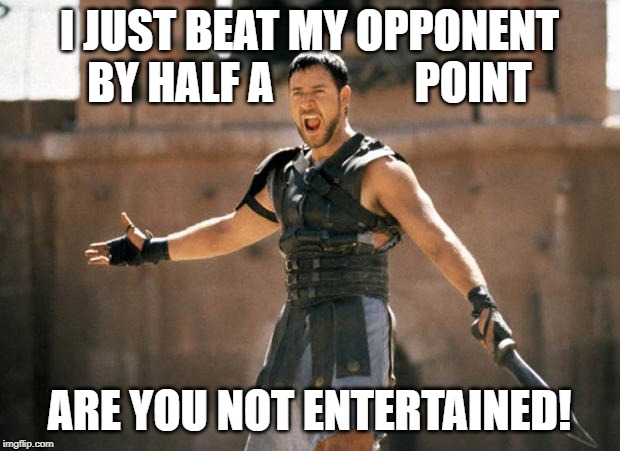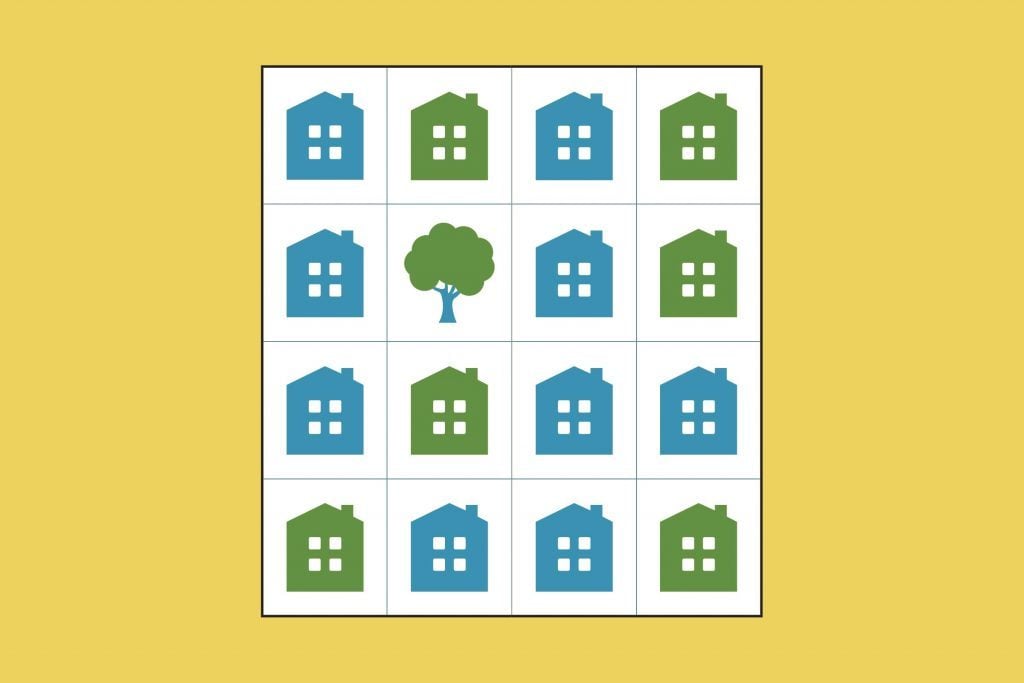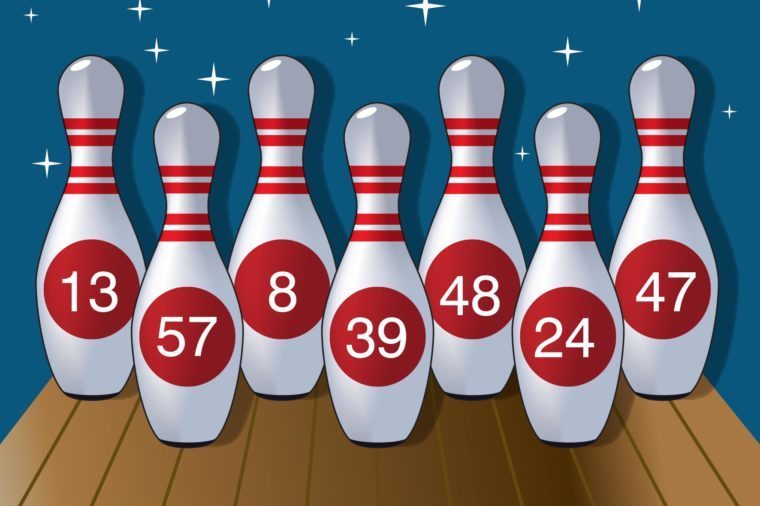Poll
 | 25 votes (49.01%) | ||
 | 16 votes (31.37%) | ||
 | 7 votes (13.72%) | ||
 | 4 votes (7.84%) | ||
 | 12 votes (23.52%) | ||
 | 3 votes (5.88%) | ||
 | 6 votes (11.76%) | ||
 | 5 votes (9.8%) | ||
 | 12 votes (23.52%) | ||
 | 10 votes (19.6%) |
51 members have voted
What makes this number unique?
Quote: Ace2Uses all base-10 digits once
Whereas 1,234,567,890 does not?
8,549,176,320 is the only integer greater than 8,549,176,319 and 8.549,176,321
Hint: what makes it unique has nothing to do with mathematics
Quote: ThatDonGuyWhereas 1,234,567,890 does not?
8,549,176,320 is the only integer greater than 8,549,176,319 and 8.549,176,321
Hint: what makes it unique has nothing to do with mathematics
It has all ten digits in alphabetical order?
Quote: gordonm888It has all ten digits in alphabetical order?
Correct!
What can I say? Sometimes ABC really is easy as one, two, three.
gordonm888: 1/2 point for final solve
Ace2: 1/2 point for key observation
Quote: GialmereCorrect!
What can I say? Sometimes ABC really is easy as one, two, three.
gordonm888: 1/2 point for final solve
Ace2: 1/2 point for key observation
And what can I buy with my 1/2 point?


Your name is Jerry Mander, and you must draw your townís voting districts so that George Greene becomes dogcatcher rather than Barbara Blue. To do that, Greene must win the majority of the cityís five voting districts. Each district comprises three households. This map shows how each of the townís 15 households will vote (the tree represents a park thatís not in any district). The catch: The three households in each district must share at least one border with at least one other household in the district. Can you draw the five districts in a way that guarantees Greene defeats Blue?
Let the districts be numbered 1-5, with P representing the park:
| 1 | 2 | 2 | 2 |
| 1 | P | 3 | 5 |
| 1 | 4 | 3 | 5 |
| 4 | 4 | 3 | 5 |
Green wins districts 2, 4, and 5 by 2-1 margins, while Blue sweeps in 1 and 3
Quote: ThatDonGuy
Let the districts be numbered 1-5, with P representing the park:
1 2 2 2 1 P 3 5 1 4 3 5 4 4 3 5
Green wins districts 2, 4, and 5 by 2-1 margins, while Blue sweeps in 1 and 3
Correct!
Wow! Quick work. Give ThatDonGuy a cigar and a backroom to smoke it in and who knows what he might achieve.
/pic5393154.png)
What playing card completes the puzzle?
___________________________
Meanwhile,
Using the numbers 2, 3, 4, and 5, and the symbols + and =, write a true statement. You must use each number and symbol once and only once.
Quote: GialmereOnly consider rows.
___________________________
Meanwhile,
Using the numbers 2, 3, 4, and 5, and the symbols + and =, write a true statement. You must use each number and symbol once and only once.
32 = 4 + 5
or
24 + 3 = 5
Quote: CrystalMathQuote: GialmereOnly consider rows.
___________________________
Meanwhile,
Using the numbers 2, 3, 4, and 5, and the symbols + and =, write a true statement. You must use each number and symbol once and only once.
32 = 4 + 5
or
24 + 3 = 5
Correct!
I always liked that little trick.
Q) What do you call ginger cut into a cube?
A) A square root.
/pic5398000.png)
What fraction of the square is shaded?
Quote: GialmereHere's another one that made a stir a while back. Hopefully it hasn't already been posted.
What fraction of the square is shaded?
I tried to post an image to Imgur, but apparently you can't link directly from Imgur any more.
Anyway, I'll try to describe it...
Let ABCD be the square, with A at the upper left and B at the upper right
Let M be the midpoint of AB
Let X be where AC intersects BM; the shaded triangle is DXC
Let N be the midpoint of CD
Let E and F be on AB and CD, respectively, such that EF goes through X
Assume AB = 2; AM = 1
Let h be the length of EX; FX = 2 - h
MDN is similar to XDF, so XF/FD = MN/ND = 2, and FX = 1 - h/2
ABC is similar to AEX, so AE/EX = AB/BC = 1, which means AE = EX = h, which means FD = h
h = 1 - h/2, so h = 2/3, and 2 - h = 4/3
The area of CXD = 1/2 * (2 - h) * 2 = 4/3
The area of the square is 4, so the fraction = (4/3) / 4 = 1/3
Quote: ThatDonGuy
I tried to post an image to Imgur, but apparently you can't link directly from Imgur any more.
Anyway, I'll try to describe it...
Let ABCD be the square, with A at the upper left and B at the upper right
Let M be the midpoint of AB
Let X be where AC intersects BM; the shaded triangle is DXC
Let N be the midpoint of CD
Let E and F be on AB and CD, respectively, such that EF goes through X
Assume AB = 2; AM = 1
Let h be the length of EX; FX = 2 - h
MDN is similar to XDF, so XF/FD = MN/ND = 2, and FX = 1 - h/2
ABC is similar to AEX, so AE/EX = AB/BC = 1, which means AE = EX = h, which means FD = h
h = 1 - h/2, so h = 2/3, and 2 - h = 4/3
The area of CXD = 1/2 * (2 - h) * 2 = 4/3
The area of the square is 4, so the fraction = (4/3) / 4 = 1/3
Correct!
Another quick solve for TDG!
-------
Q) How do triangles communicate?
A) They use sine language.
Quote: GialmereHere's another one that made a stir a while back. Hopefully it hasn't already been posted.
What fraction of the square is shaded?
Length of square =1,
Equation of slanting line 1 : y = 2x
Equation of slanting line 2 : y = -x + 1
Find Intersection point :-
2x = -x +1
x = 1/3, y = 2/3
Shaded area = 2/3 * 1 * 1/2 = 1/3
Square area = 1
Fraction = 1/3 / 1 = 1/3
Quote: ssho8
Length of square =1,
Equation of slanting line 1 : y = 2x
Equation of slanting line 2 : y = -x + 1
Find Intersection point :-
2x = -x +1
x = 1/3, y = 2/3
Shaded area = 2/3 * 1 * 1/2 = 1/3
Square area = 1
Fraction = 1/3 / 1 = 1/3
Correct!
Your logic is easier to follow.
Quote: rsactuaryI didn't see a solution to the card puzzle? I can't figure it out.
Quote: Gialmere
What playing card completes the puzzle?
It's a toughie and still in play...
Hint #1: Only consider rows.
Hint #2: Consider the first three cards and then the fourth card.
----------------------------------
Meanwhile,
At a party, everyone shook hands with everybody else. There were 66 handshakes. How many people were at the party?
12Quote: Gialmere
Meanwhile,
At a party, everyone shook hands with everybody else. There were 66 handshakes. How many people were at the party?
Quote: Ace212Quote: Gialmere
Meanwhile,
At a party, everyone shook hands with everybody else. There were 66 handshakes. How many people were at the party?
Correct!
Move over TDG. Ace2 has the new speed record!
("False" would also be acceptable since there are no parties and, if there were, no one would be shaking hands.)
-----------
Q: How does a ghost solve a quadratic equation?
A: By completing the scare.
Quote: ChesterDogI will assume that an ace's value is one. Then the final card is the 2 of hearts.
Close but no cigar.
Quote: GialmereQuote: ChesterDogI will assume that an ace's value is one. Then the final card is the 2 of hearts.
Close but no cigar.
Quote: ChesterDogQuote: GialmereQuote: ChesterDogI will assume that an ace's value is one. Then the final card is the 2 of hearts.
Close but no cigar.Then I will have to go with the 6 of hearts. The straight flush in diamonds must be a clue.
Still close. Still no cigar.
3 of heart ?
Mod 10 (total of three highest point card in a row) = lowest point card. Consider Ace is one point.
Meanwhile, just to inform that I am a "serious" Baccarat player ! LOL
If Q is consider 12 points, then the better answer is Q of heart.
Quote: ssho88Card puzzle answer
3 of heart ?
Mod 10 (total of three highest point card in a row) = lowest point card. Consider Ace is one point.
Meanwhile, just to inform that I am a "serious" Baccarat player ! LOL
If Q is consider 12 points, then the better answer is Q of heart.
...in a different way; the rank is the arithmetic mean of the values of the first three cards, and the suit is the one that is not already in the row
Meanwhile, here's another question: where can I go to post images that I can link here? As I said earlier, Imgur no longer seems to allow this.
Quote: ssho88Card puzzle answer
3 of heart ?
Mod 10 (total of three highest point card in a row) = lowest point card. Consider Ace is one point.
Meanwhile, just to inform that I am a "serious" Baccarat player ! LOL
If Q is consider 12 points, then the better answer is Q of heart.
I'm not sure of your logic, but your answer is...
Correct!
The pattern is the fourth card in a row is equal to the average of the first three cards and each suit must be represented.
Marriage is like a deck of cards. In the beginning all you need is two hearts and a diamond. By the end you wish you had a club and spade.
Quote: GialmereQuote: ssho88Card puzzle answer
3 of heart ?
Mod 10 (total of three highest point card in a row) = lowest point card. Consider Ace is one point.
Meanwhile, just to inform that I am a "serious" Baccarat player ! LOL
If Q is consider 12 points, then the better answer is Q of heart.
I'm not sure of your logic, but your answer is...
Correct!This is one of the toughest of this type of puzzle I've ever seen.
The pattern is the fourth card in a row is equal to the average of the first three cards and each suit must be represented.
Marriage is like a deck of cards. In the beginning all you need is two hearts and a diamond. By the end you wish you had a club and spade.
1st row : Mod 10( 7+10+7)= 4 = lowest point card of the row
2nd row : Mod 10( 10+8+8)= 6 = lowest point card of the row
3rd row : Mod 10( 2+6+x)= 1 = lowest point card of the row
x = 3
There are three card with same suit, the missing suit is HEART, so answer is 3 of heart.

Which pins do you have to knock over to get a total of 100 points?
Quote: JoemanIf I knocked over the 39, the 48, and the 13, I would get exactly 100. It would take a heck of a shot to pick this up and not knock over any other pins, but not impossible. Besides, it looks like I took out the 1-2-3 pins without knocking any of the other ones down on my first shot, so there shouldn't be a problem converting the 5-7-9 on my second, right?
Correct!
Joeman strikes the kingpins!
------------------------------------
I'm really good at bowling. I always get a hole in one.
At an archery tournament, the winner scored exactly one hundred points.The scores on the target are: 16, 17, 23, 24, 39 and 40.Can you figure out how many arrows the winner must have used to accomplish the feat?
Quote: GialmereEh? Bowling was too easy? Well, try some archery...
At an archery tournament, the winner scored exactly one hundred points.The scores on the target are: 16, 17, 23, 24, 39 and 40.Can you figure out how many arrows the winner must have used to accomplish the feat?
Six - two 16s and four 17s
Mod 8, the values are 0, 1, 7, 0, 7, 0, and the sum mod 8 = 4
A solution of 4 arrows would be four 1s or four 7s
4 x 17 = 68
4 x 23 = 92
Replacing any 23 with a 39 makes it more than 100
Therefore, there is no 4-arrow solution
A solution of 5 arrows would be a zero and four 1s, or a zero and four 7s
4 x 17 + 16 = 84
4 x 17 + 24 = 92
4 x 17 + 40 = 108
The smallest sum of four 7s and a zero is 4 x 23 + 16 = 108
Therefore, there is no 5-arrow solution either
The smallest solution with seven or more arrows is 7 x 16 = 112, so any solution must be 6 arrows
This game costs $250 to play. Whatís the house edge ?
Quote: Ace2Letís say youíre betting on a coin flip and you get paid $300 if you call it correctly on the first toss, $150 if you call it on the second toss, $100 for the third, $75 for the fourth, and so on. The game ends when you call a toss correctly.
This game costs $250 to play. Whatís the house edge ?
I need more info about the "and so on", as the payments don't follow a progression. If the game were to end after the 4th toss, I get a house edge of 29.6875%.
1st toss $300 / 1
2nd toss $300 / 2
3rd toss $300 / 3
i get 42.06%?
Quote: Ace2They do follow a progression.
1st toss $300 / 1
2nd toss $300 / 2
3rd toss $300 / 3
HE =( 250 - 0.5(100) - 0.5(300) )/ 250 = 50/250 = 20%
I will show calculations if my answer is correct.
Quote: ssho88HE =( 250 - 0.5(100) - 0.5(300) )/ 250 = 50/250 = 20%
I will show calculations if my answer is correct.
You forgot the "and so on" part.... it goes forever until you call it right.... and I think you have a math error as well.
Quote: rsactuaryYou forgot the "and so on" part.... it goes forever until you call it right.... and I think you have a math error as well.
My new answer
1) When you call it correctly on first flip(p)
Return = p * $300 = 0.5 *300 = 150
2) When you call it wrongly on first flip(q)
p =0.5, q =0.5
So return = qp(300/2)+ q^2p(300/3) + q^3p(300/4) + . . . . .
= 0.5^2(300/2) + 0.5^3(300/3) + 0.5^4(300/4)+ . . . . + 0.5^n(300/n) ----->convergence series
= 300* ln(2) - 150 = 57.94415
HE = (250 - 150 - 57.94415)/250 = 16.82%
Quote: ssho88My new answer
1) When you call it correctly on first flip(p)
Return = p * $300 = 0.5 *300 = 150
2) When you call it wrongly on first flip(q)
p =0.5, q =0.5
So return = qp(300/2)+ q^2p(300/3) + q^3p(300/4) + . . . . .
= 0.5^2(300/2) + 0.5^3(300/3) + 0.5^4(300/4)+ . . . . + 0.5^n(300/n) ----->convergence series
= 300* ln(2) - 150 = 57.94415
HE = (250 - 150 - 57.94415)/250 = 16.82%
I agree with your return, it's what I calculated. Not sure I agree with your HE calculation.
16.8%
Quote: rsactuaryQuote: ssho88My new answer
1) When you call it correctly on first flip(p)
Return = p * $300 = 0.5 *300 = 150
2) When you call it wrongly on first flip(q)
p =0.5, q =0.5
So return = qp(300/2)+ q^2p(300/3) + q^3p(300/4) + . . . . .
= 0.5^2(300/2) + 0.5^3(300/3) + 0.5^4(300/4)+ . . . . + 0.5^n(300/n) ----->convergence series
= 300* ln(2) - 150 = 57.94415
HE = (250 - 150 - 57.94415)/250 = 16.82%
I agree with your return, it's what I calculated. Not sure I agree with your HE calculation.
My HE definition = (COST - RETURN)/COST.
Quote: Ace2Letís say youíre betting on a coin flip and you get paid $300 if you call it correctly on the first toss, $150 if you call it on the second toss, $100 for the third, $75 for the fourth, and so on. The game ends when you call a toss correctly.
This game costs $250 to play. Whatís the house edge ?
Edit: I forgot, it costs only $250 to play, so the house edge should be 1 - (6/5)ln2.


